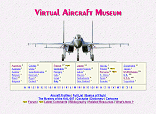 |
BOEING |
 |
| USA |
Founded 15 July 1916 by William E. Boeing as Pacific Aero Products Corporation. Name changed to Boeing Airplane Company April 26,1917. Bid successfully for the San-Francisco-Chicago airmail route in 1927 and formed subsidiary Boeing Air Transport to operate the route; as other airlines were acquired, this became Boeing AirTransport System. Merged with Pratt & Whitney, Standard Steel Propeller Co, and two small aircraft manufacturers to form United Aircraft & Transport Corporation in 1929. All continued to operate under original identities; United Air Lines formed as holding company of airlines. In 1934 legislation prevented aircraft and engine manufacturers from operating airlines: those of the former Boeing Air Transport System reorganized into a new United Air Lines. Boeing, together with Stearman, a wholly owned subsidiary, adopted the name Boeing Aircraft Company. The name Boeing Airplane Company was readopted in 1948. In May 1961, following acquisition of Vertol in 1960, became known as The Boeing Company, which remains the name
Very important changes in company structure took place in 1996, when on December 15 it was announced that a merger had been agreed with McDonnell Douglas. The two large organizations began operating as a single company from August 4,1997, under the Boeing name. Also in December 1996 Boeing purchased Rockwell International's aerospace and defense units, these being retitled Boeing North American Inc. and subsequently becoming part of Boeing's Space Systems business unit. Several internal restructures of the Boeing organization followed, the set-up (at the time of writing) comprising three main groups .namely, Information, Space ,and Defense systems Group (ISDS), Boeing Commercial Airplane Group (BCAG), and Boeing Shared Services Group; the latter for information management and computing resources. Within ISDS are various business units comprising Aircraft and Missile Systems (to undertake Boeing's military airplane and helicopter programs, plus oversee tactical missile development), Boeing Space Systems (to oversee Boeing's space programs for DoD and NASA), Information and Communication Systems (programs include AWACS surveillance systems, communications systems and more), Phantom Works (a previous McDonnell Douglas unit for advanced research and development,
First product B & W Seaplane of 1916, designed by William Boeing in conjunction with Conrad Westervelt. First production order was for Model C seaplane trainer for U.S. Navy (first flown 1916), followed by Model EA land trainer of 1916 for U.S. Army. Improved Model C of 1918 was first mass-produced Boeing aircraft, built alongside Boeing-constructed Curtiss HS-2L flying-boats. First post-First World War design was the B-1 three-seat flying-boat (first flown December 1919), while in 1920 the first flight took place of the first of many Boeing-built DH-4s (based on British Airco D.H.4). Built ten U.S. Army-designed GA-1 armored ground
First real success with own-design military aircraft came in 1923, with the PW-9/FB-1 series, which had a fabric-covered welded-steel-tube fuselage. Other aircraft followed in quick succession, types of particular note including the Boeing Model 40, designed for carriage of airmail plus two (and later four) passengers, used by new Boeing Air Transport. Model 80 12-passenger transports with three Pratt & Whitney Wasp engines introduced by Boeing Air Transport in 1928. World's first airline stewardesses introduced on these aircraft 1930. Model 80A with more powerful Hornet engines and seats for 18 passengers followed. Biggest military order to that date (other than MB-3As) came in 1931, when U.S. Army ordered 135 P-12E single-seat fighters, and U.S. Navy 113 of the similar F4B-3: total of 586 aircraft in this series built by 1933 (prototype Model 83 for P-12 series had flown June 1928). Boeing Model 200 Monomail, mail/cargo aircraft, first flew May 1930; revolutionary aircraft with cantilever allmetal monoplane wing,
Significant military aircraft since the early 1930s have included the B-17 Flying Fortress bomber (first flown July 1935), of which 12,731 examples were built; B-29 Superfortress bomber (first flown September 1942); B-47 Stratojet medium jet bomber (first flown December 1947); B-52 Stratofortress intercontinental strategic bomber (first flown April 1952); E-4
Aircraft which have made important contributions to global air transport, in addition to those previously mentioned, include the Model 314 flying-boat (first flown June 1938); Model 307 Stratoliner with pressurization (first flown December 1938); Model 377 Stratocruiser (first flown November 1944 as XC-97 military transport); Model 367-80 turbojet transport (first flown July 1954) which was put into production as a military tanker-transport for the USAF as the KC-135 Stratotanker and as the Model 707 commercial airliner; Model 727 tri-jet short/medium-range airliner (first flown February 1963); Model 737 twinturbofan short-range airliner (first flown April 1967 and still in production in 1999 in advanced and Next Generation versions, with development continuing and over 4,000 sold); Model 747 four-jet wide-body high-capacity airliner (first flown February 1969 and given the press nickname "Jumbo Jet"; still in production in 1999 in latest 747-400 series versions, with new versions under development); Model 757 twin-jet medium-range airliner (first flown February 1982)'; Model 767 twin-jet wide-body medium/longrange airliner (first flown September 1981); and Model 777 twin-jet wide-body long-range airliner. Since the merger with McDonnell Douglas,
Since the merger of Boeing and McDonnell Douglas, Boeing's helicopter range has grown. However, Boeing took the strategic
|
 All the World's Rotorcraft Model 1 Model 15 / PW-9 / FB Model 21 / NB Model 40 F2B / Model 69 XP-4 XP-8 / Model 66 Model 74 / XF3B-1 F3B / Model 77 Model 80 XP-7 / Model 93 F-4B / P-12 Model 200 Monomail XP-9 Model 221 Monomail XP-15 / XF5B-1 Model 214, 215, 246 / YB-9, Y1B-9 P-26 "Peashooter" 247 XF6B-1 / Model 236 XF7B-1 / Model 273 YP-29 XB-15 307 "Stratoliner" B-17 "Flying Fortress" 314 "Clipper" B-29 "Superfortress" XF8B Model 367 / C-97 B-50 B-47 "Stratojet" 377 "Stratocruiser" B-52 "Stratofortress" 707 720 KC-135 / C-135 727 737 SST 747 E-3A "Sentry" YC-14 767 757 777 |








